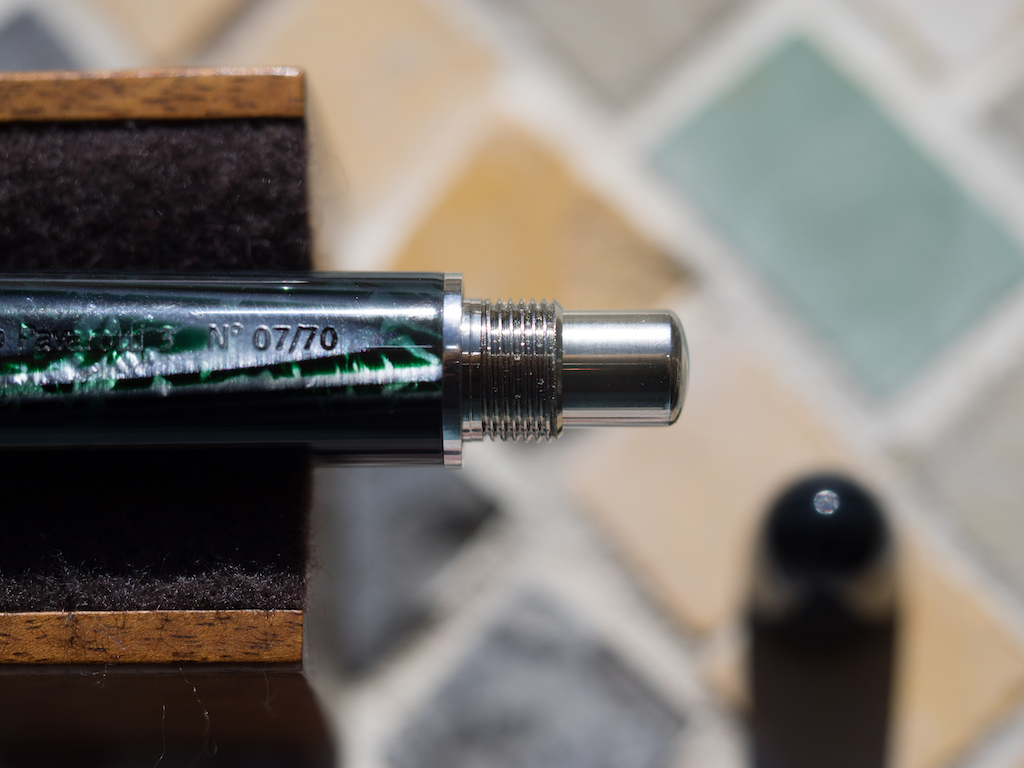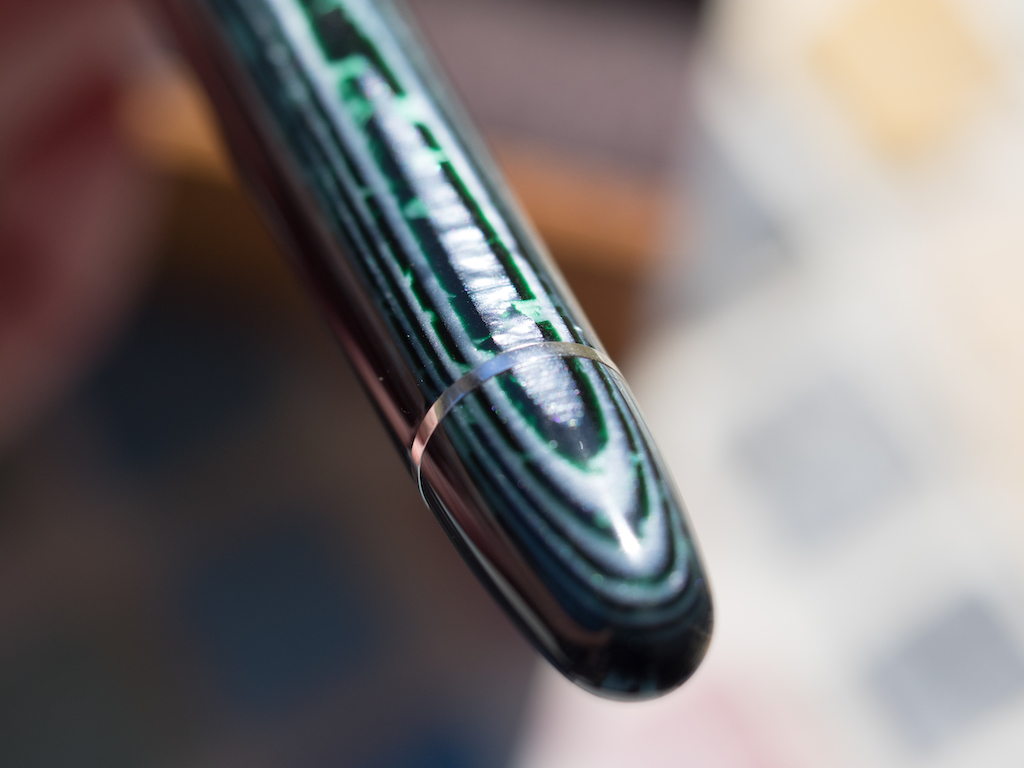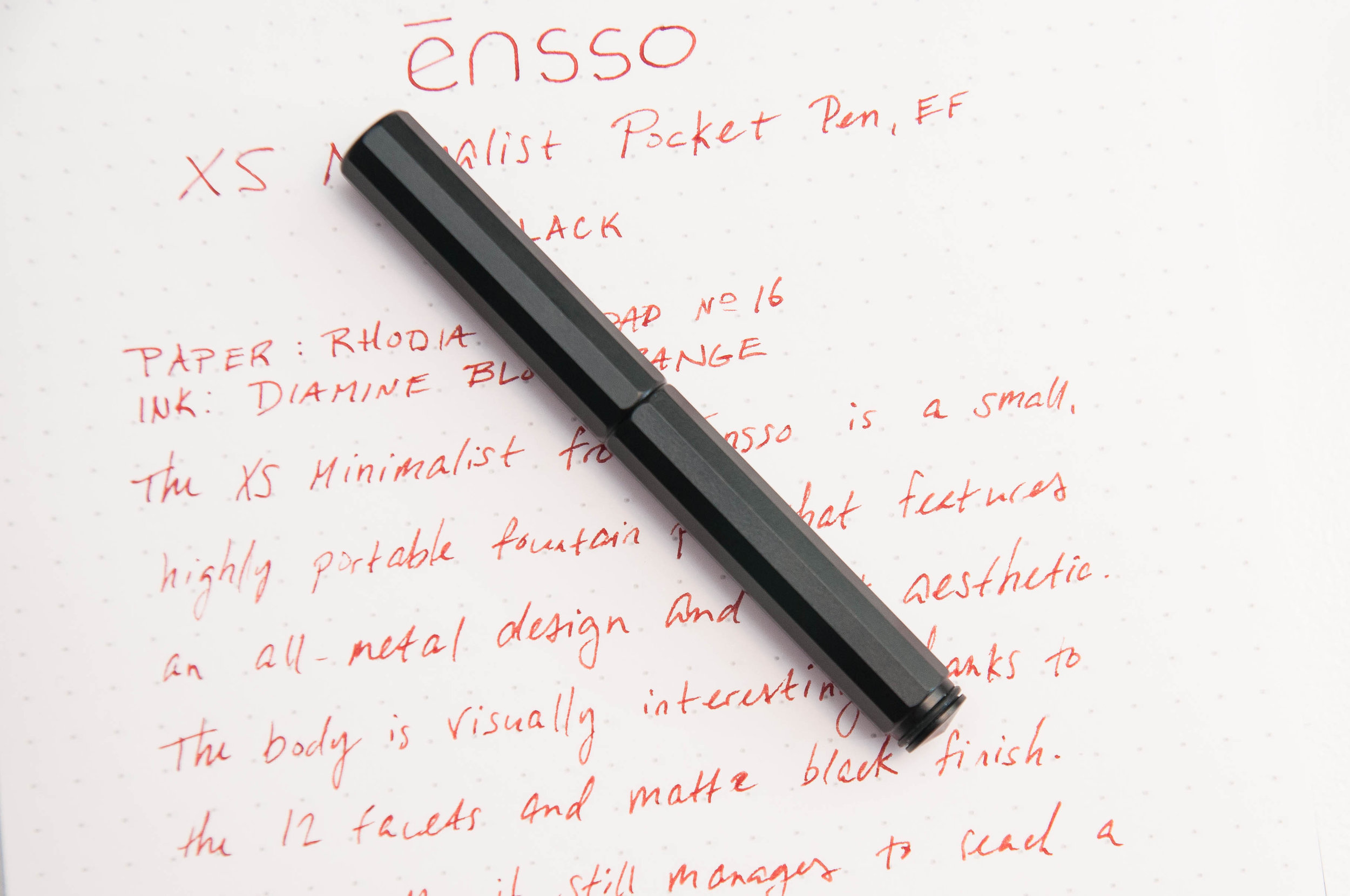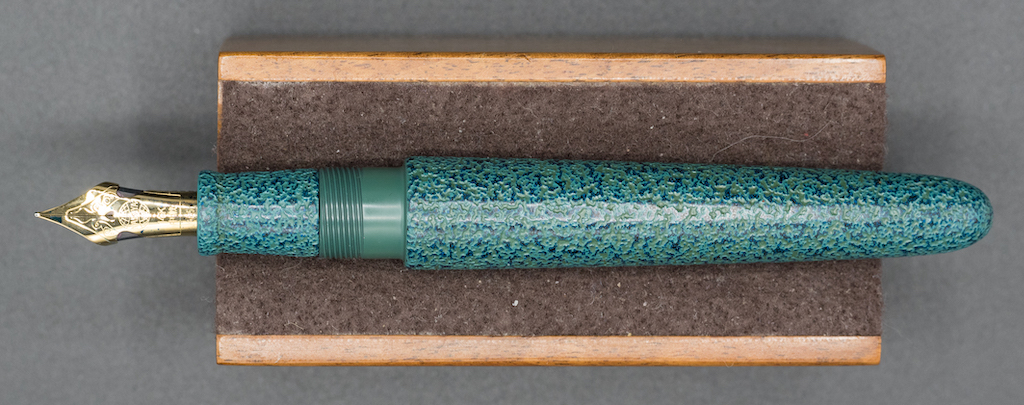(Susan M. Pigott is a fountain pen collector, pen and paperholic, photographer, and professor. You can find more from Susan on her blog Scribalishess.)
I’ve been aching for an Arco Verde fountain pen for a long time. I owned an Omas Brown Arco, but I stupidly sold it right before Omas went out of business. I miss that pen, but I actually preferred the Arco Verde color. I thought I was out of luck or that I would have to pay over $1,000 to get an Omas version.
Happily, the Armando Simoni Club (ASC) saved the day! They purchased the remaining stock of Omas celluloid rods, and they’ve been making various pens with the celluloid for the past few years. However, those pens have been oversized versions, and I wanted an Arco Verde in a regular-sized pen. When the Luciano Pavarotti series was announced, I was excited that maybe “my” pen was on the way. Sure enough, the Pavarotti is an Ogiva shape and size, and it’s priced under $1,000!
There are three Pavarotti pens: Arco Verde with rhodium trim and a rhodium-plated 14k gold nib, Blue la Royale with rose gold trim and nib, and Wild Celluloid with gold trim and nib. A couple of other Pavarotti pens also made an appearance in Saft Green and Brown Arco, but these are neither piston fillers nor do they have music nibs.
My pen came in a classy-looking black box that unfolds to reveal the pen and the ASC motto.
The pen itself is sealed in plastic between two black frames. I couldn’t help but think of Han Solo (cue Star Wars theme). Anyway, the pen came out of the plastic “carbonite” in pristine condition.
The words “ASC Armando Simoni Club Pavarotti” along with the number of your pen are engraved on the front of the pen. This engraving is so subtle that it does not mar the celluloid (more on the celluloid later). I love the limited edition number I lucked out on: No. 07 out of 70.
The Pavarotti is a large pen, measuring almost 6 inches/150mm capped and 5.4 inches/137mm uncapped. It is not meant to be posted. It’s a hefty pen (I don’t have a scale to weigh it), but it is well balanced.
The cap has a rhodium clip with the special roller ball to make it easier to attach the pen to papers or a pocket.
The cap band has Pavarotti’s name engraved along with music notes and a treble and bass clef. All of this looks really nice. It’s not overstated or gaudy. In fact, you have to look closely to see the music notations.
The bottom of the barrel unscrews (below a plain silver ring) to reveal the piston knob.
The piston works beautifully--nice and smooth, with none of the problems associated with old Omas pistons. It even has a fail-safe mechanism to prevent over-tightening the piston. If you go too far, you hear a ratchet sound and you know to stop. I honestly thought I had broken the pen when I first heard this horrifying sound, but another owner told me what it was--what a relief!
The barrel steps down to the grip section (all made from one piece of celluloid). The step down doesn’t bother me in the least because it is far from where my fingers rest. The grip is topped with another rhodium ring which is engraved with “Pavarotti Edition 2018.” My fingers touch the threads while I’m writing, but they are smooth and are not bothersome.
In my view, the two most exciting features of this pen are the celluloid and the music nib.
Arco Verde celluloid is like nothing else (well, except for Arco brown, of course). It is a deep, spinach green with silver lines that run through it like grain in wood. One thing I didn’t know about Arco celluloid until I had one in hand is that the front and back of the pen have the striking lines of silver that you see in most photos.
The sides of the pen have very subtle lines that you actually cannot see except in bright light.
The celluloid is simply mesmerizing. It’s hard to do it justice in photographs.
When I purchased my pen from Chatterley Luxuries, I stipulated that I really wanted the celluloid to line up perfectly. I’m very impressed that, if I make sure to match the clip with the top of the pen when I thread the cap, the celluloid lines up every single time. I don’t have to guess where to start threading in order to make things match (I have some pens that require several tries to get patterns lined up). The celluloid on my Arco almost lines up perfectly. It’s just a smidge off, as you can see in the photo below. I only noticed it when I looked closely at my pictures before posting my review; it’s not so drastic that it will drive me crazy, OCD as I am!
The other special aspect of the Pavarotti is the music nib. Unlike other ASC pens that feature a flex nib, the Pavarotti has a three-tine music nib without flex.
It’s a gorgeous nib, adorned only with the ASC logo, the words “music nib” and the gold content.
I was a little worried that this nib would be too wide for my tastes, but it isn’t at all. It measures exactly 1mm wide, and it writes like a nice juicy stub.
The vertical lines measure about 1mm and the horizontal lines measure maybe .25mm.
It’s a very usable nib. I can write large letters with it when I want to do calligraphy:
And I can write in my normal handwriting as well:
The nib is smooth and problem free, though it does have a sweet spot. Occasionally, I will shift the pen a bit and miss a downstroke. But it’s not because the nib is misaligned, I just have to hold the pen correctly. When I do, this beautiful pen sings!
I inked my Pavarotti Arco Verde with Sailor Epinard ink, and it’s been a good combination. I plan to try Robert Oster Eucalyptus next.
Only seventy Pavarotti pens in each celluloid are available. Chatterley Luxuries has one in the Arco Verde celluloid in stock at the time of this post. If you want this pen, don’t hesitate. I’m not sure how long they’ll be around.
Enjoy reading The Pen Addict? Then consider becoming a member to receive additional weekly content, giveaways, and discounts in The Pen Addict shop. Plus, you support me and the site directly, for which I am very grateful.
Membership starts at just $5/month, with a discounted annual option available. To find out more about membership click here and join us!











































